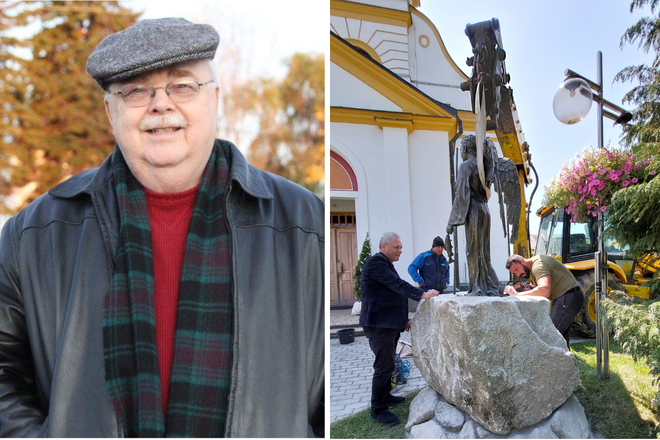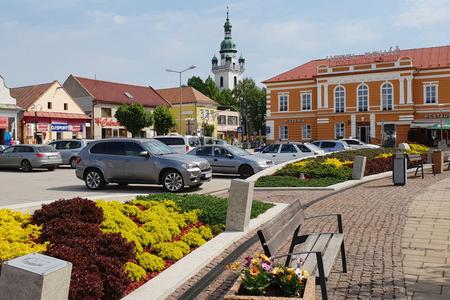In Habovka, a small village in the Orava region of northern Slovakia, a new bronze sculpture now stands in the garden of the local Catholic church. The figure, the Archangel Raphael – patron of migrants and travellers – is dedicated to generations of Oravans who left their homes to seek new lives abroad, writes My Orava.
The initiative came from Thomas Klimek Ward, an American historian and former Slovak honorary consul in Illinois, whose great-grandparents were among the first emigrants from the valley. Jozef Klimek, from Habovka, and his wife Mária Matisová, from nearby Zuberec, married in 1886 before moving first to Canada and then to Joliet, Illinois. They donated land for the town’s Slovak church, but Jozef was later killed in a railway accident. One of their sons, Štefan, went on to marry another Slovak migrant, Magdaléna from Hlohovec, and their family line led to Ward, born in 1944.
More than a century later, Ward has been recognised in Orava itself: in 1996 he was awarded honorary citizenship of Habovka, followed two years later by the town of Hlohovec, where his grandmother was born.
Although raised in Illinois, Ward was acutely aware of his roots. As a young man serving with the US navy in the 1960s, he visited Czechoslovakia for the first time while on shore leave in the Mediterranean. Communism made the trip short and communication difficult – he spoke no Slovak at the time – but it deepened his determination to learn the language and reconnect with relatives. He taught himself Slovak with grammar books and later improved it with help from exiles who fled after the Soviet invasion in 1968.
The new work was created by sculptor Miroslav Mĺkvik and rests on a granite plinth outside the Church of Our Lady of Sorrows. A plaque reads: “Saint Raphael, Archangel, patron of emigrants, pilgrims, travellers. In memory of the people of Studená Dolina, who for various reasons left their homeland and remained abroad, yet carried Orava and Slovakia in their hearts.”
The installation was itself a communal effort. When the original six-tonne limestone base proved impossible to move, a villager offered a granite boulder instead. Neighbours, the sculptor and even the parish priest helped position the work in place, before local gardeners landscaped the surrounding space.
The statue will be blessed on 28 September, with a Mass dedicated to emigrants from the two villages. For Ward, it is both personal and collective. “It is a celebration of emigrants from the valleys of Orava,” he said, “who had to leave their homeland but always carried it in their hearts.”







